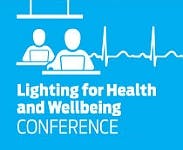Sleep researcher Dr. Neil Stanley led a 24-hour experiment into the impact of different CCT environments on sleep, alertness, and moods at the Future Designs Technology Hub with surprising results.
Lighting manufacturer Future Designs has announced the results of a 24-hour lighting for health and wellbeing, or human-centric lighting, experiment that was performed at the company’s new Technology Hub in the trendy Clerkenwell area of London, UK. Independent sleep researcher Dr. Neil Stanley (http://www.thesleepconsultancy.com/) led the experiment that was called Light Work Sleep and that took place during the week of the summer solstice — the longest day of the year. Two female volunteers slept and underwent experiments and evaluations in different LED lighting conditions that yielded some expected and some surprising results.
Interested in articles & announcements on human-centric lighting technology?
Future Designs has said the testing environment was imperfect, although it was in part created to educate the public, and that had an impact on the environment. One of the volunteers was exposed strictly to warm 2700K-CCT solid-state lighting (SSL) while the other was exposed strictly to much cooler 6000K. The custom LED luminaires —wall-to-wall ceiling panels — were installed in two identical rooms in the Technology Hub with windows clearly visible to passersby. The rooms were lit throughout the day and night and some natural light entered via the windows. The experiment ran from 10:00 AM June 19 until 10:00 AM the following morning.
The volunteers were physically similar and followed the same routine of simulated work during the day and sleep at night with the intent of discerning how different lighting environments can impact sleep and wake functions. Consultant Stanley performed cognitive tests on the second morning and evaluated other aspects of alertness and mood on a recurring basis over the two days.
Conventional thinking would indicate that the volunteer in the 6000K-lit space would be more alert and productive due to the greater energy in the blue part of the spectrum. We covered some of that theory in a recent feature article on the topic of human-centric lighting.
The sleep experiment engineered by lighting manufacturer Future Designs produced some very interesting results in the field of human-centric lighting.
The Future Designs experiments did not find that the volunteer in the 6000K space was universally more alert. The volunteer in the 6000K space did perform better on a cognitive card-sorting test but not on a timed reaction test called the Psychomotor Vigilance Task. The volunteer in the 6000K space also felt more drowsiness in the afternoon and evening and a greater feeling of clumsiness throughout the day. Future Designs said those result may simply be due to prolonged exposure to the cool light during parts of the day where natural light would be getting progressively warmer.
Conventional thinking would also indicate that the volunteer in the 2700K space would have better sleep patterns. Again, we have covered in prior articles the theory that such warm CCTs at night are conducive to restful sleep.
The Light Work Sleep experiments again yielded mixed results. Based on the Karolinska Sleepiness Scale, the volunteer in the 2700K space experienced lower levels of sleepiness throughout the 24-hour period.
Future Designs concluded that the application of light to impact wellbeing may be a very individualized science. For sure, experiments that studied the different light environments on the same person at different times might have produced different conclusions. Still, the company said the experiments made it clear that different lighting conditions had a significant impact on performance.
Consultant Stanley said, “While tunable white light may have the ability to modulate alertness and performance, it is only one of many factors that affect our everyday life. The relative contribution of the effect of light on everyday alertness and performance needs to be elucidated.”
We will spend a full day diving into the science of human-centric lighting at our upcoming Lighting for Health and Wellbeing Conference in Newport Beach, CA on July 18. The one-day immersive conference will feature some of the leading global experts on the topic including Dr. Satchidananda Panda of the Salk Institute and Dr. Octavio Perez of Mount Sinai Hospital. To get a feel for what attendees will learn, you might peruse our report on the 2017 conference.








